Events 2005
January 27
Lecture: Leviathans of the Floating World: Sumo Wrestlers and the Japanese PrintHarold Bolitho (Professor of Japanese History, Department of East Asian Languages and Civilizations, Harvard University)
403 Kent Hall, Columbia University (116th St. and Amsterdam Ave.)
6:00 PM - 7:30 PM
During the Tokugawa period, Japanese popular culture produced its share of celebrities. Many of them, particularly the actors and the courtesans, are known to us from the woodblock prints of the time, the ukiyo-e, or "pictures of the floating world." But another group, no less well-known in their generation than their counterparts from the stage or the pleasure quarter, have been virtually ignored. They are the popular sporting heroes of the day, the sumo wrestlers. In studies of the Japanese print, these figures have been marginalized, consigned to the category of the curious and the eccentric. It is not difficult to see why. In the West we have always tended to privilege the delicate, the diminutive, and the understated in Japanese culture, an aesthetic that leaves little room for representations of big, fat, strong, sweaty men. This neglect is undeserved. Sumo wrestling is just as typical of traditional Japan as the more elegant pastimes of the tea ceremony, haiku, and flower arrangement. If anything, it enjoyed greater popularity. Each of the great print designers responded to the sport, producing a variety of pictures to satisfy public demand. These prints are well worth our attention, for despite wrestling's thematic limitations, the artists' desire to emphasize the bulk and might of their subjects prompted the development of new techniques. The resulting icons of power are unique in the otherwise sedate and tasteful world of the woodblock print.
Co-sponsored by the Ukiyo-e Society of America, Inc.
February 3
"Eating Japan" Annual Lecture SeriesNutrition, Politics, and Profit: The Making of Japanese National Cuisine
Katarzyna J. Cwiertka (Centre for Japanese and Korean Studies, Leiden University)
403 Kent Hall, Columbia University (116th St. and Amsterdam Ave.)
6:00 PM - 7:30 PM
This lecture explores the transformation in the food habits of Japanese people that took place from the late nineteenth century to the 1950s, illuminating the way in which it intertwined with the rise of Japanese national identity. It traces the emergence of a nationally uniform diet that replaced localized and diverse practices of pre-modern times. Japanese national cuisine was assembled on a hybrid foundation of pre-modern urban culinary patterns integrated with dietary models selectively imported from European countries and the United States. However, it was by no means a seamless, top-down project. Rather, a national cuisine was given shape by both state initiatives and various independent forces of industrialization, urbanization, and modernization.
February 4-5
Fourteenth Annual Graduate Student Conference on East AsiaKent Hall, Columbia University (116th St. and Amsterdam Ave.)
Co-sponsored by the Donald Keene Center of Japanese Culture, The Graduate School of Arts and Sciences, The Departmentof East Asian Languages and Cultures, The Weatherhead East Asian Institute, The Chiang Ching-kuo Foundation for Chinese Cultural and Institutional History, and The Institute for Medieval Japanese Studies.
February 10
Donald Keene Center Special Lecture SeriesThe Most Essentially Female Function of All?: Birth-Giving in Premodern Japan
Hitomi Tonomura (Associate Professor, Department of History, University of Michigan)
403 Kent Hall, Columbia University (116th St. and Amsterdam Ave.)
6:00 PM - 7:30 PM<
 Women and men hold different physiological and social relationships to birth-giving, an act polemically dubbed "the most essentially female function of all." Koji ruien, an early twentieth-century encyclopedia of historical sources, disaggregates the term "birth [tanjô]" into three verbs: "umaru [to be born]" for the child, "umu [to give birth]" for the mother, and "umasu [to make someone give birth]" for the father. Instead of a structure of binaries expressed as "nature vs. culture" or "female vs. male," these verbs turn birth-giving into a dynamic and multidimensional process that embodies distinct interests of different human agencies associated with hierarchically arranged subject positions. Treatment of premodern births in much modern scholarship reflects the power relations governed by the authority to "umasu." Prevalent in these works is a tendency to submit the entire birthing experience to a static and totalizing notion of kegare (pollution). Evidence such as the scattered remains of ubuya (parturition huts) is cited to support this intellectual position. The nearly universal and unchanging physiological aspects of vaginal birth-expulsion of the offspring followed by the placenta--also contribute to a static understanding of birth-giving and help to justify the reading of the 'data' backward in time. Only when the meaning of birth-giving is freed from the discursive shackle of kegare can we begin to appreciate the history of the "umu" sex.
Women and men hold different physiological and social relationships to birth-giving, an act polemically dubbed "the most essentially female function of all." Koji ruien, an early twentieth-century encyclopedia of historical sources, disaggregates the term "birth [tanjô]" into three verbs: "umaru [to be born]" for the child, "umu [to give birth]" for the mother, and "umasu [to make someone give birth]" for the father. Instead of a structure of binaries expressed as "nature vs. culture" or "female vs. male," these verbs turn birth-giving into a dynamic and multidimensional process that embodies distinct interests of different human agencies associated with hierarchically arranged subject positions. Treatment of premodern births in much modern scholarship reflects the power relations governed by the authority to "umasu." Prevalent in these works is a tendency to submit the entire birthing experience to a static and totalizing notion of kegare (pollution). Evidence such as the scattered remains of ubuya (parturition huts) is cited to support this intellectual position. The nearly universal and unchanging physiological aspects of vaginal birth-expulsion of the offspring followed by the placenta--also contribute to a static understanding of birth-giving and help to justify the reading of the 'data' backward in time. Only when the meaning of birth-giving is freed from the discursive shackle of kegare can we begin to appreciate the history of the "umu" sex.
February 17
Special Lecture: East Meets West: 1838Donald Keene (Shincho Professor of Japanese Literature Emeritus, Columbia University)
403 Kent Hall, Columbia University (116th St. and Amsterdam Ave.)
6:00 PM - 7:30 PM
In the spring of 1838, members of the Dutch trading station on Deshima made their annual visit to Edo. The questions and answers of the interview between the head of the station and various Japanese intellectuals were recorded by the painter Watanabe Kazan. They reveal how desperately eager the Japanese were to find out whatever they could about the Mysterious West.

March 10
Lecture: Contemporary Prints: A Gift to Los AngelesHollis Goodall (Associate Curator of Japanese Art, Los Angeles County Museum)
403 Kent Hall, Columbia University (116th St. and Amsterdam Ave.)
6:00 PM - 7:30 PM
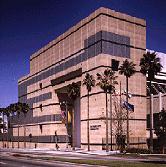 In 2003, Los Angeles County Museum of Art Associate Curator for Japanese Art, Hollis Goodall, was invited to participate in judging the 48th annual College Women's Association of Japan print exhibition to be held that year. The curator of the print show, Mary Way, and the Association President, Marilyn Gosling, arranged for a gift of the show's contents to the Los Angeles County Museum of Art, one of the main venues on the West Coast for modern Japanese prints. Hollis Goodall speaks about trends in contemporary Japanese prints, based on this overview of 138 prints given to the museum. A number of the artists responded to surveys sent out by Goodall, and their answers lend insight to our understanding of the art form in the present day.
In 2003, Los Angeles County Museum of Art Associate Curator for Japanese Art, Hollis Goodall, was invited to participate in judging the 48th annual College Women's Association of Japan print exhibition to be held that year. The curator of the print show, Mary Way, and the Association President, Marilyn Gosling, arranged for a gift of the show's contents to the Los Angeles County Museum of Art, one of the main venues on the West Coast for modern Japanese prints. Hollis Goodall speaks about trends in contemporary Japanese prints, based on this overview of 138 prints given to the museum. A number of the artists responded to surveys sent out by Goodall, and their answers lend insight to our understanding of the art form in the present day.
Co-sponsored by the Ukiyo-e Society of America, Inc.
March 21
Lecture: Linguistic Transformation and Awareness: The Case of the Tokyo Metropolitan AreaTanaka Yukari (Associate Professor, Nihon University)
403 Kent Hall, Columbia University (116th St. and Amsterdam Ave.)
4:30 PM - 6:00 PM
Lecture in Japanese
Accents have usually been regarded as a feature of language that is slow to change compared to other aspects such as vocabulary, phonemes, and grammatical forms. While being hardly noticed by speakers, the accents of adjectival conjugational forms are in fact susceptible to change. Taking up the case of the Tokyo metropolitan area in the past 100 years, Professor Tanaka examines the complex patterns of accents for adjectival forms and considers the transformations of accents in terms of standardization (out of existing local dialects) and the creation of a new local metropolitan dialect.
March 21
Lecture: Lights and Shadows of a Modernist: Kawabata Yasunari and Postwar High Economic GrowthToeda Hirokazu (Professor, Waseda University)
403 Kent Hall, Columbia University (116th St. and Amsterdam Ave.)
6:00 PM - 7:30 PM
Lecture in Japanese
Kawabata Yasunari (1899-1972), who started his literary career in the 1920s and 1930s as an avant-garde, modernist writer of New Sensationism (Shinkankakuha), came to be regarded in the postwar years as a national writer representing the Japanese tradition. Professor Toeda examines the way in which postwar mass media constructed Kawabata to become such a national writer. In addition to a consideration of popular print media such as pocket-book editions, anthologies, and school textbooks, Professor Toeda will analyze the manner in which Kawabata's works have been reproduced and consumed through popular visual media such as film, television drama, and advertisement, as well as the ways in which tourist industries have explored Kawabata's The Izu Dancer, Snow Country, The Sound of the Mountain, and Old Capital as cultural resources.
March 24
2005 Sôshitsu Sen XV Distinguished Lecture on Japanese Culture: Fujitsubo and The Tale of Genji 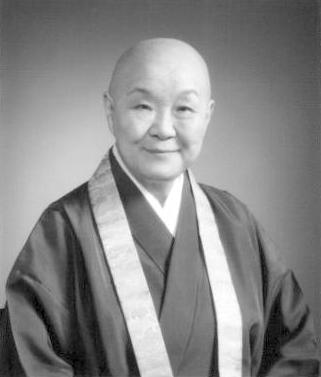 SETOUCHI Jakuchô
SETOUCHI Jakuchô
Low Rotunda, Low Memorial Library, Columbia University (116th Street between Broadway and Amsterdam Ave.)
6:00 PM
RSVP REQUIRED BY MARCH 18TH
PLEASE E-MAIL the Donald Keene Center or call 212-854-0656 by the event deadline with your contact information.
March 25-26 (Friday-Saturday)
Symposium: The Tale of Genji in Japan and the World: Social Imaginary, Media, and Cultural Production501 Schermerhorn Hall, Columbia University (118th St. and Amsterdam Ave.)
8:30 AM - 6:45 PM
Registration required by March 10th.
April 7
Donald Keene Center Special Lecture SeriesAnthologies and Awards: Publishing History and Modern Japanese Literature
Ted Mack (Assistant Professor, University of Washington)
403 Kent Hall, Columbia University (116th St. and Amsterdam Ave.)
6:00 PM - 7:30 PM
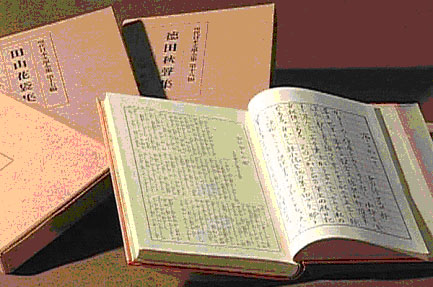 The publishing industry played a pivotal role in the construction of modern Japanese literature. Two of the central mechanisms through which the industry exerted influence over the social conception and position of literature -- and continues to exert influence -- are the anthology and the literary award. Kaizôsha's Complete Works of Contemporary Japanese Literature, published between 1926 and 1931, and the Akutagawa Prize for literature offer key illustrations of how individuals have shaped the course of literary production and reception in modern Japan.
The publishing industry played a pivotal role in the construction of modern Japanese literature. Two of the central mechanisms through which the industry exerted influence over the social conception and position of literature -- and continues to exert influence -- are the anthology and the literary award. Kaizôsha's Complete Works of Contemporary Japanese Literature, published between 1926 and 1931, and the Akutagawa Prize for literature offer key illustrations of how individuals have shaped the course of literary production and reception in modern Japan.
April 11
The 'Korean Wave' Washes on Japan's (and the Rest of Asia's) Shores: An Evening of Conversation403 Kent Hall, Columbia University (116th St. and Amsterdam Ave.)
6:00 PM - 8 PM
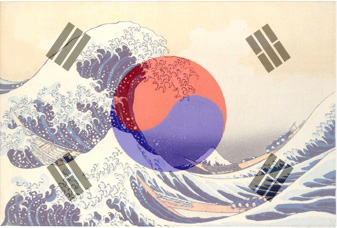
In Japan they call it the 'Korean Boom' (Kanryuu Buumu). In the English-speaking world it has become known as the 'Korean Wave.' What is it that makes (South) Korean culture so hot (or cool) in Asia and around the world today? How is this trend being perceived in Korea, Japan, China, and elsewhere? What does the phenomenon signify within the broader historical context of Japanese-Korean relations, in which cultural exchange has at times functioned as a wellspring of civilization and at time as an instrument of colonial oppression? Join us for an evening of conversation on these and other timely issues with distinguished East Asia scholars from Columbia and neighboring institutions.
Barbara Brooks (Associate Professor of Modern East Asian History, CUNY)
Jahyun Haboush (Professor of Korean History and Literature, Columbia)
Ted Hughes (Assistant Professor of Korean Literature, Columbia)
Dorothy Ko (Professor of Chinese History, Barnard)
Max Moerman (Assistant Professor of Japanese Religion, Barnard)
Richard Peña (Associate Professor of Film, Columbia)
Greg Pflugfelder (Associate Professor of Japanese History, Columbia)
Janet Poole (Assistant Professor of Korean Literature, NYU)
Henry Smith (Professor of Japanese History, Columbia
April 14
Donald Keene Center Special Lecture SeriesArt During the Occupation: The Case of Matsumoto Shunsuke
Donald McCallum (Professor, Department of Art History, University of California, Los Angeles)
403 Kent Hall, Columbia University (116th St. and Amsterdam Ave.)
6:00 PM - 7:30 PM
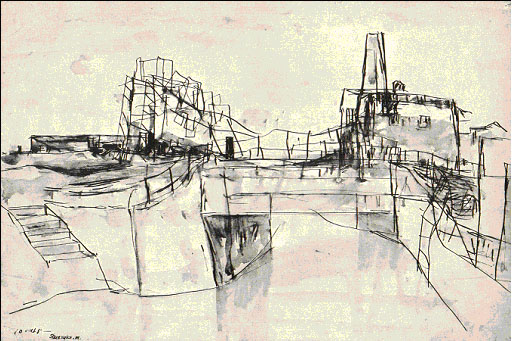 A crucial aspect of modern Japanese experience, the Occupation of 1945-1952, has been well studied by historians and political scientists, but less attention has been given to the visual culture of these years. This talk will deal with some of the key issues of the period, concentrating on the work of the painter Matsumoto Shunsuke (1912-1948). Particular attention will be directed toward his artistic responses during the immediate aftermath of the war, especially in relation to the destruction of Tokyo. The talk will conclude with an analysis of Matsumoto's efforts to reestablish a personal artistic identity in 1946-1948, following the hardships and tragedies of the war years.
A crucial aspect of modern Japanese experience, the Occupation of 1945-1952, has been well studied by historians and political scientists, but less attention has been given to the visual culture of these years. This talk will deal with some of the key issues of the period, concentrating on the work of the painter Matsumoto Shunsuke (1912-1948). Particular attention will be directed toward his artistic responses during the immediate aftermath of the war, especially in relation to the destruction of Tokyo. The talk will conclude with an analysis of Matsumoto's efforts to reestablish a personal artistic identity in 1946-1948, following the hardships and tragedies of the war years.
April 15
Symposium: The Aesthetics and Politics of SuperflatEast Gallery at Buell Hall, Columbia University (116th St. and Amsterdam Ave.)
9:30AM- 5:30PM. A one-day symposium of presentations centering around works and practices associated with the aesthetic theory known as "Superflat." Coined by the artist Murakami Takashi, Superflat describes an aesthetic (highly influenced by digital technologies and Japanese animation) characterized by the interplay of mobile, flat surfaces. The presentations at this symposium will examine the implications of Superflat in relation to art, media, music, society, and politics in Japan and beyond.
Marilyn Ivy (Dept. of Anthropology, Columbia University)
Sabu Kohso (Independent Scholar; Translator)
Alexandra Munroe (Director, Japan Society Gallery)
David Novak (Dept. of Music, Columbia University)
Thomas Lamarre (Dept. of East Asian Studies, McGill University)
Thomas Looser (Dept. of East Asian Studies, New York University)
Admission is FREE, but reservations are required. To register, e-mail the Donald Keene Center of Japanese Culture at donald-keene-center@columbia.edu. We recommend early registration as seats are limited.
Co-sponsored by The Department of East Asian Studies at New York University and The Japan Society
April 20
"Godzilla in New York" ProgramGodzilla and the Bravo Shot: Who Created and Killed the Monster?
Yuki Tanaka (Research Professor, Hiroshima Peace Institute)
403 Kent Hall, Columbia University (116th St. and Amsterdam Ave.)
6:30 PM - 8:00 PM
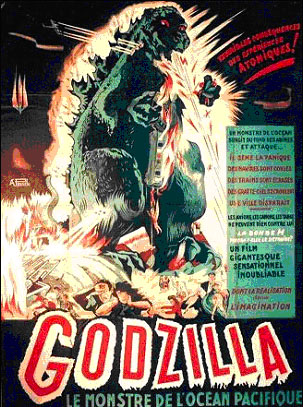 Godzilla is now one of the most popular film characters in the world. Yet it is often forgotten that the rise of this monster was closely interrelated with the Bravo Shot, a 1954 hydrogen-bomb test that the U.S. conducted in the Marshall Islands, irradiating a Japanese fishing boat called, ironically, the Lucky Dragon No. 5. The 1954 film Gojira reflected not only the immense fear of nuclear arms that pervaded the Japanese nation at the time, but also the Pacific War experiences of the Japanese population and especially the aerial bombing of civilians by U.S. forces. This lecture examines the different ways in which the American and Japanese people have attempted to understand the horror of nuclear war and aerial bombing through an analysis of the Godzilla films produced in the two countries over the past fifty years.
Godzilla is now one of the most popular film characters in the world. Yet it is often forgotten that the rise of this monster was closely interrelated with the Bravo Shot, a 1954 hydrogen-bomb test that the U.S. conducted in the Marshall Islands, irradiating a Japanese fishing boat called, ironically, the Lucky Dragon No. 5. The 1954 film Gojira reflected not only the immense fear of nuclear arms that pervaded the Japanese nation at the time, but also the Pacific War experiences of the Japanese population and especially the aerial bombing of civilians by U.S. forces. This lecture examines the different ways in which the American and Japanese people have attempted to understand the horror of nuclear war and aerial bombing through an analysis of the Godzilla films produced in the two countries over the past fifty years.
Co-sponsored by The Weatherhead East Asian Institute
April 21
"Godzilla in New York" ProgramLecture with Screening: A Proletarian Godzilla: Pulgasari and North Korean Cinema
Charles Armstrong (Associate Professor of History, Columbia University)
Altschul Auditorium, 417 International Affairs Building (118th St. and Amsterdam Ave.)
8:00 PM
Directed by esteemed South Korean filmmaker Shin Sang-ok during his enforced stay in North Korea in the 1980s, Pulgasari represents a unique blend of entertainment and ideological education according to Kim Jong Il's principles of cinematic art. Set in the medieval Koryo dynasty, North Korea's answer to Godzilla seems on the surface to be a critique of feudal Korean society, but it can also be read as a subtle attack on the North Korean regime itself. This talk will discuss the film and its place in the history of (North) Korean cinema.
Co-sponsored by The Weatherhead East Asian Institute and The Center for Korean Research
April 28
Donald Keene Center Special Lecture SeriesHeian Love: Domestic and Imported
Robert Borgen, Professor of History, University of California-Davis
403 Kent Hall, Columbia University (116th St. and Amsterdam Ave.)
6:00 PM - 7:30 PM
Murasaki Shikibu would have us believe that, in Heian times, professors were a stodgy lot. Some of their literary output in Chinese, however, reveals that they could enjoy playful, albeit learned, erotic diversions. More remarkably, they chose to include such compositions in their anthologies of literary exemplars. This talk will introduce one example of Heian erotic writing in Chinese and attempt to place it in the context of both Chinese and Japanese literary traditions.
April 29
2004 Japan-U.S. Friendship Commission Prize Ceremony for the Translation of Japanese LiteratureMain Reading Room, C.V. Starr East Asian Library, Kent Hall, Columbia University (116th St. and Amsterdam Ave.)
5:15 PM
RSVP REQUIRED
The Donald Keene Center of Japanese Culture will hold an award ceremony and reception honoring the winner of the 2004 Japan-U.S. Friendship Commission Prize for the Translation of Japanese Literature:
Lawrence Rogers (Professor of Japanese, University of Hawai'i at Hilo)
for his translation of
Tokyo Stories: A Literary Stroll (University of California Press)
For more details, please visit the Translation Prize website.
May 2
"Godzilla in New York" Program Final EventSpecial Screening of Gojira (1954) in its original, uncut version
Japanese with English subtitles
Roone Arledge Auditorium, Lerner Hall (115th St. and Broadway)
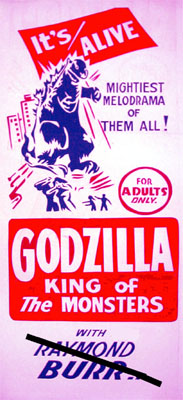 Please use the campus-side entrance, at the northeast corner of the building
Please use the campus-side entrance, at the northeast corner of the building8 PM
RSVP BY APRIL 27 FOR COMPLIMENTARY TICKETS
Raymond Burr begone! Before its fifteth-anniversary release last year, Godzilla's original film appearance had remained unseen by most Americans. It was instead the thoroughly recrafted Hollywood version of 1956, titled Godzilla, King of the Monsters, that generations had grown up with and learned to love in its own hokey way. Beneath the self-posturing of Raymond Burr lies a somberer film, one of the great masterpieces of twentieth-century cinema. Director Honda Ishirô's original vision powerfully conveys the realities and the nightmares of a nation that had been leveled by atomic and aerial bombing less than a decade previously, and that continued to witness ever more deadly nuclear-weapons testing off its own shores. The Donald Keene Center, in cooperation with Rialto Pictures, is proud to present the complete and unedited 1954 version of Gojira.
Co-sponsored by The Weatherhead East Asian Institute
September 9
Workshop: Culture and Power in Japanese Literature: A Rikkyō Workshop403 Kent Hall, Columbia University (116th St. and Amsterdam Ave.)
10:00 AM - 1:00 PM
KOJIMA Naoko, Rikkyō University, Power and The Tale of Genji
KOMINE Kazuaki, Rikkyō University, Power and Otogi-zōshi
WATANABE Kenji, Rikkyō University, Yaoya Shichi of Tenna 2 and Power
September 23
Workshop: Heian Courtier DiariesYOSHIDA Sanae (Professor of History, Tokyo Daigaku Shiryō Hensanjo)
403 Kent Hall, Columbia University (116th St. and Amsterdam Ave.)
10:00 AM - 1:00 PM
September 26
Workshop: The Play Kanadehon Chūshingura as a Template for Prints of Beautiful WomenEllis Tinios (Honorary Lecturer, School of History, University of Leeds)
403 Kent Hall, Columbia University (116th St. and Amsterdam Ave.)
6:00 PM - 7:30 PM
September 29
Screening and Discussion: John Manjiro and the Opening of Japan: A Special Screening of The Castaway: The Story of Manjiro (2005) - 45 min202 Altschul Hall, Barnard College
6:00 PM - 7:30 PM
Introductory remarks by Junji Kitadai
Panel Discussion to follow screening
Robert Immerman, Senior Research Scholar, Weatherhead East Asian
Institute (moderator)
Henry Smith, Professor of Japanese History
Junji Kitadai, journalist, historian, and co-editor of Drifting Toward the Southeast
Ayumi Sato, documentary film maker
October 6
"Korean Influences in Japanese Culture" Lecture SeriesRevisiting the "Horseriders" and Other Issues in Early Japanese History
Gari Ledyard (King Sejong Professor Emeritus of Korean Studies, Columbia University)
403 Kent Hall, Columbia University (116th St. and Amsterdam Ave.)
6:00 PM - 7:30 PM
October 12
"Celluloid Samurai" Film Series: Zatoichi Meets Yojimbo (1970)304 Barnard Hall, Barnard College
6:00 PM
October 17
Forum: Matchibako: Japanese Matchbox Art of the 20s and 30s403 Kent Hall, Columbia University (116th St. and Amsterdam Ave.)
6:00 PM - 7:30 PM
Hiroshi Kashiwagi, Professor of Design History, Musashino Art University, Tokyo
Henry D. Smith II, Professor of Japanese History, Columbia University
Japanese matchbox art of the 1920s and 1930s is a graphic reflection of the excitement and confusion faced by Japanese society in that era, a fluid and vital period when the country was transforming into an industrialized nation. Maggie Kinser Hohle, author of a new book exploring these tiny and evocative works, in a dialogue with design scholar Hiroshi Kashiwagi and historian Henry Smith, will examine the social, political, and economic environment in which Japanese matchbook art evolved. Issues to be considered include the switch from anonymous to professional and well-known designers, the reversal from graphics that built on the European model to those that followed America's lead, and the birth of social and consumer independence among urban youth.
Co-sponsored by The Bard Graduate Center for Studies in the Decorative Arts, Design, and Culture, and in association with Mark Batty Publisher
October 27
"Korean Influences in Japanese Culture" Lecture SeriesThe Japanese "Discovery" of Korea(ns): Becoming Visible, 1590-1700
Ronald Toby (Professor of History, University of Illinois at Urbana-Champaign)
403 Kent Hall, Columbia University (116th St. and Amsterdam Ave.)
6:00 PM - 7:30 PM
Co-sponsored by The Weatherhead East Asian Institute and The Center for Korean Research
October 31st
Histories of Japanese Book Collections in University Libraries in the United StatesAtsuhiko WADA (Associate Professor of Japanese Language and Culture, Shinshu University)
403 Kent Hall, Columbia University (116th St. and Amsterdam Ave.)
4:30PM - 6:00PM
Professor Wada will explore the variety and complexity of the origins and history of Japanese book collections in major university libraries in the United States.
November 2
A Digital Tour of the UC Berkeley Japanese Historical MapsHisayuki Ishimatsu, Head of Japanese Collections, U.C. Berkeley
203 Butler Library, Columbia University
10:30 AM
November 3
Lecture: Wearing Propaganda: Textiles in Wartime JapanJacqueline M. Atkins (Kate Fowler Merle-Smith Curator of Textiles, Allentown Art Museum)
403 Kent Hall, Columbia University (116th St. and Amsterdam Ave.)
6:00 PM - 7:30 PM
November 9
"Celluloid Samurai" Film Series: Gohatto (1999)304 Barnard Hall, Barnard College
6:00 PM - 7:30 PM
November 10
An Evening of Conversation: Japanese Cinema in New York Today403 Kent Hall, Columbia University (116th St. and Amsterdam Ave.)
6:00 PM - 7:30 PM
November 17
"Celluloid Samurai" Film Series: Twilight Samurai (2002)304 Barnard Hall, Barnard College
6:00 PM
November 28The Aesthetics of 'Cute' (Kawaii)Inuhiko Yomota (Professor of Film and Media Studies, Meiji Gakuin University) 403 Kent Hall, Columbia University (116th St. and Amsterdam Ave.) 4:00 PM - 5:30 PM 11/23 We regret to announce that this talk has been cancelled for reasons of the speaker's health. Professor Yomota has assured us that he looks forward to delivering the lecture on a future visit to New York, perhaps as early as next year. We are sorry for any inconvience that this rescheduling may have caused. The dominant aesthetic of eleventh-century Japanese aristocrats was that of 'mono no aware', which emphasized the transient beauty of a world in which all things are constantly changing and disappearing. For sixteenth-century tea masters, the dominant principle of beauty was 'wabi', which shunned ostentation and ornament in favour of modest yet witty understatement. Twentieth-century philosophers turned back to the aesthetic concept of 'iki', which they saw as a perfect synthesis of willpower, coquetry, and detachment.
Today, the dominant aesthetic is that of 'kawaii'. 'Kawaii' is an adjective that generally denotes the small, the reassuring, and the lovable. It is somewhat different than the English word 'cute', for it includes not just babies, young girls, and stuffed toys, but also full-grown men and the elderly, depending on the context. Animated characters from Pokemon to Hello Kitty have turned 'kawaii' into a massive industry which extends far beyond racial and national boundaries into the realm of global consumer society. Through an analysis of the concept of 'kawaii', this lecture illuminates not only the evolutionary history of Japanese aesthetics, but how 'kawaii' functions as an ideology and a mythology underpinning contemporary Japan.
|
November 29
Lecture: The Forefront of Japanese Pop Literature and Criticism: "Light Novels", Games, and Otaku ImaginationHiroki AZUMA (Associate Professor, Center for Global Communications, International University of Japan)
403 Kent Hall, Columbia University (116th St. and Amsterdam Ave.)
6:00 PM - 7:30 PM
December 1
"Korean Influences in Japanese Culture" Lecture SeriesIllegal Korea: A Century of International Law between Japan and Korea
Alexis Dudden (Associate Professor of History, Connecticut College)
403 Kent Hall, Columbia University (116th St. and Amsterdam Ave.)
6:00 PM - 7:30 PM
December 5
Questioning "Compensation": A Half Century of Ishimure Michiko's Paradise in the Sea of Sorrow and "Minamata Disease"Kanai Keiko (Professor of Japanese Literature, Waseda University)
403 Kent Hall, Columbia University (116th St. and Amsterdam Ave.)
4:30 PM - 6:00 PM
December 6
Marketing the Bunjin: Takebe Ayatari as an 18th-Century Entrepreneur of the ArtsDr. Lawrence Marceau (Senior Lecturer in Japanese, University of Auckland)
403 Kent Hall, Columbia University (116th St. and Amsterdam Ave.)
5:00 PM - 6:30 PM
December 8
Lecture: On the Cultural History of Retirement: The Meiji Rejection of InkyoEric Johnson (Department of East Asian Languages and Civilizations, University of Chicago)
403 Kent Hall, Columbia University (116th St. and Amsterdam Ave.)
6:00 PM - 7:30 PM
Eric W. Johnson is a Whiting Fellow in the Department of East Asian Languages and Civilizations at University of Chicago.